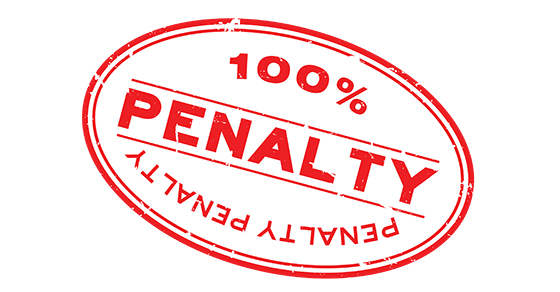Do you conduct your business as a sole proprietorship or as a wholly owned limited liability company (LLC)? If so, you’re subject to both income tax and self-employment tax. There may be a way to cut your tax bill by using an S corporation.
Self-employment tax basics
The self-employment tax is imposed on 92.35% of self-employment income at a 12.4% rate for Social Security up to a certain maximum ($137,700 for 2020) and at a 2.9% rate for Medicare. No maximum tax limit applies to the Medicare tax. An additional 0.9% Medicare tax is imposed on income exceeding $250,000 for married couples ($125,000 for married persons filing separately) and $200,000 in all other cases.
Similarly, if you conduct your business as a partnership in which you’re a general partner, in addition to income tax you are subject to the self-employment tax on your distributive share of the partnership’s income. On the other hand, if you conduct your business as an S corporation, you’ll be subject to income tax, but not self-employment tax, on your share of the S corporation’s income.
An S corporation isn’t subject to tax at the corporate level. Instead, the corporation’s items of income, gain, loss and deduction are passed through to the shareholders. However, the income passed through to the shareholder isn’t treated as self-employment income. Thus, by using an S corporation, you may be able to avoid self-employment income tax.
Salary must be reasonable
However, be aware that the IRS requires that the S corporation pay you reasonable compensation for your services to the business. The compensation is treated as wages subject to employment tax (split evenly between the corporation and the employee), which is equivalent to the self-employment tax. If the S corporation doesn’t pay you reasonable compensation for your services, the IRS may treat a portion of the S corporation’s distributions to you as wages and impose Social Security taxes on the amount it considers wages.
There’s no simple formula regarding what is considered reasonable compensation. Presumably, reasonable compensation is the amount that unrelated employers would pay for comparable services under similar circumstances. There are many factors that should be taken into account in making this determination.
Converting from a C to an S corp
There can be complications if you convert a C corporation to an S corporation. A “built-in gains tax” may apply when appreciated assets held by the C corporation at the time of the conversion are subsequently disposed of. However, there may be ways to minimize its impact.
As explained above, an S corporation isn’t normally subject to tax, but when a C corporation converts to S corporation status, the tax law imposes a tax at the highest corporate rate (21%) on the net built-in gains of the corporation. The idea is to prevent the use of an S election to escape tax at the corporate level on the appreciation that occurred while the corporation was a C corporation. This tax is imposed when the built-in gains are recognized (in other words, when the appreciated assets are sold or otherwise disposed of) during the five-year period after the S election takes effect (referred to as the “recognition period”).
Consider all issues
Contact us if you’d like to discuss the factors involved in conducting your business as an S corporation, including the built-in gains tax and how much the business should pay you as compensation







